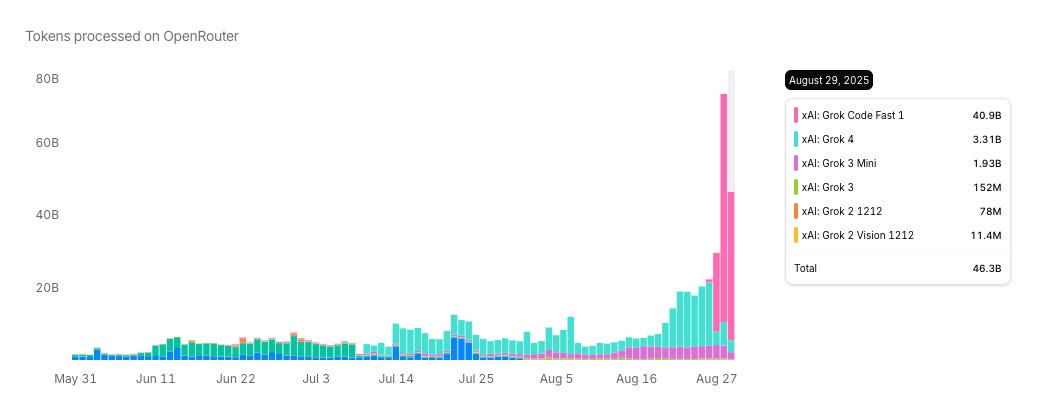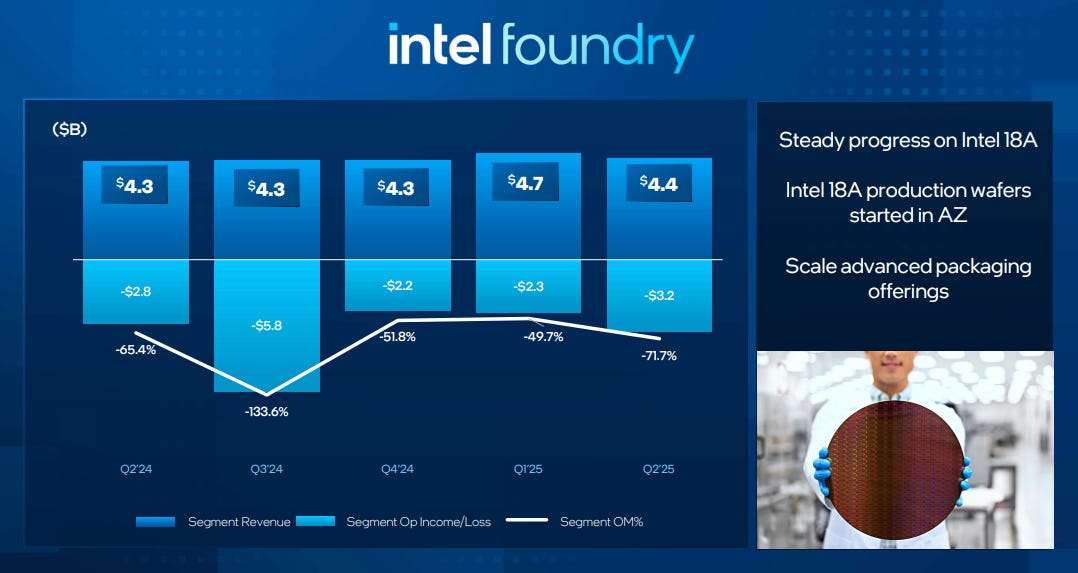All eyes on inflation
We could limit inflationary pressure by reducing trade barriers. Then we could cut rates, too. Wouldn’t that be nice.
Welcome to Cautious Optimism, a newsletter on tech, business, and power.
Friday. Key AI news and notes on the latest inflation reading are below. Up top I want to highlight this piece from TechCrunch’s Tim De Chant which reports that in the second quarter, “more clean tech manufacturing investments were canceled in the U.S. in the second quarter than were announced.” It’s a reversal of trend from what we saw during the IRA-era, and before the OBBB period we now live in. To work! — Alex
📈 Trending Up: Crypto competition … Realtime … Indian IPOs … Affirm, after earnings … German inflation … dangerous pique … defense of Fed independence … Pure Storage, after earnings … domestic corruption … Indian GDP growth … OECD GDP … tariff costs …
📉 Trending Down: Your AI privacy … how much time TBD has (and its internal calm) … vector databases? … your cloud privacy … controlling American companies … Danish GDP growth … the de minimis rule … domestic competence … Canadian GDP …
Things That Matter
xAI takes on coding market: After testing its new model quietly under the ‘Sonic’ tag, xAI formally released grok-code-fast-1 this week. Part of the larger Grok family of AI models, it’s a quick coding model that is also inexpensive. Priced at $0.20 per million input tokens and $1.50 per million output tokens, and free usage across a number of major coding tools (GitHub Copilot, Cursor, etc), xAI is swinging hard.
We don’t cover every new model that comes out, but xAI’s new model has greatly expanded overall demand for its technology, and you can easily trace its growth to the new model:
Microsoft takes on OpenAI: Microsoft AI (MAI) says that it needs “purpose-built models” to “fully meet [its] goals.” So, the Redmond team built a few. Dubbed MAI-Voice-1 and MAI-1-preview, the former is a speech model while the second is MAI’s “first foundation model trained end-to-end.” How good is it? Early testing on LMArena pegs the Microsoft foundation AI model as the 13th most capable model on the market across multiple categories. Enough to change the AI market? No. Enough to indicate that Microsoft’s AI team is not merely an enterprise wrapper around OpenAI tech? Yes.
Intel’s albatross: As expected, a large component of the Intel-USG deal was to ensure that the American chip company doesn’t sell off its foundry business, which manufactures chips for third-parties. Why the government wants Intel to hold onto its foundry business makes sense: If domestic chip production capacity is your goal, you don’t want to see homegrown fabs sell off or shut down.
What sucks is that Intel investors, which include all of us through our retirement accounts, are now stuck with this around our collective necks:
The money that Intel was promised, and later converted into shares by force, will only go so far against a -$3.2 billion quarterly loss. Mere quarters, in fact.
Alibaba’s cloud growth: Pulling from its latest earnings report, Alibaba reports that its Cloud Intelligence Group grew 26% in the second quarter. That’s solid, and much faster growth than the company managed overall. However, “AI-related product revenue” grew by triple digits (YoY) “for the eighth consecutive quarter.” Put another way, growing AI compute and product demand is helping Alibaba continue to grow, period.
China, meanwhile, is working to foment AI investment and adoption, but avoid overcapacity and wasted effort. Good luck, but the quote from Li Chao that is making the rounds reads (machine translation):
“We must act in accordance with local conditions. We will encourage all regions to scientifically determine development priorities based on their locational characteristics, resource endowments, and industrial bases, fostering a coordinated development landscape characterized by distinctive features, effective results, and complementary strengths, while resolutely avoiding disorderly competition and a rush into development.
Fusion rising: There are a host of startups working on fission (mostly in the form of SMRs, or small modular reactors), and fusion energy production. The latter category features a bevy of different experimental thrusts, including stellerators, tokomaks, intertial confinement setups, and even Field-Reversed Configuration as a method to keep plasma in place. I have no idea which approach will prove the most viable the quickest. But investors just bet $863 million on Commonwealth in a Series B2 round that its tokomak-based design will win out. Breakthrough, Google, Nvidia, and others took part in the funding round.
All eyes on inflation
Currently the US government is locked in a war between independent experts in select roles, and the power of the executive to staff those jobs with toadies. The Supreme Court has largely sided with the executive branch in recent legal tangling, holding the Fed as an exception to POTUS sway. That hasn’t stopped the current President from using his refs to work the system. It’s gross — hypocritical! — and economically dangerous.
Today, the BEA dropped new inflation data. Personal consumption expenditures (PCE) came in as expected in July, with the PCE’s price index rising 0.2% in July for a 2.6% gain on a year-over-year basis. Core PCE, which strips out a few volatile categories, rose by 0.3% or 2.9% on a year-over-year basis.
Here’s the chart:


